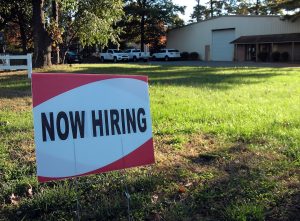No products in the cart.
Navigating the Cost-of-Living Crisis: Strategies for Resilience
As food and fuel prices soar, young consumers face a daunting cost-of-living crisis. This article explores strategies for financial resilience amid economic uncertainty.
[City], [Country] — The cost-of-living squeeze is more than just a headline; it’s a daily reality for millions. As food and fuel prices remain stubbornly high, consumers, particularly younger generations, find themselves navigating an increasingly treacherous economic landscape.
In recent months, inflation has tightened its grip, with the prices of essential goods and services skyrocketing. For many, the grocery bill feels like a barometer of economic health, with staples like bread and milk costing significantly more than they did just a year ago. Meanwhile, fuel prices threaten to sap the last remnants of disposable income, making the simple act of commuting a financial burden.

But what exactly is driving this surge in prices? Economists point to a cocktail of factors: supply chain disruptions, increased demand post-pandemic, and geopolitical tensions that have led to volatile energy markets. In the United States, for instance, the consumer price index rose by 6.5% year-on-year as of August 2025, with food prices climbing by nearly 10% during the same period.
 AI
AIHarnessing AI for Job Seekers: Resume Innovations
AI resume hacks are changing the job search landscape, helping candidates stand out and secure interviews. Explore innovative strategies here.
This economic strain is particularly pronounced among younger consumers, many of whom are still grappling with the aftermath of the COVID-19 pandemic. The gig economy, while providing flexibility, often lacks the stability and benefits of traditional employment, leaving many young adults vulnerable to financial shocks. According to a recent survey by the Pew Research Center, 71% of millennials reported feeling anxious about their financial futures, a sentiment echoed by Gen Z.
The average student loan debt for recent graduates hovers around $30,000, a figure that looms large as they attempt to enter a workforce that is simultaneously competitive and costly.
For many, this anxiety is not unfounded. The average student loan debt for recent graduates hovers around $30,000, a figure that looms large as they attempt to enter a workforce that is simultaneously competitive and costly.
However, amid the uncertainty, there are strategies that young consumers can employ to navigate these turbulent waters. Budgeting, for instance, is more crucial than ever. Apps like Mint and YNAB (You Need A Budget) have gained traction, helping users track their spending and identify areas for potential savings. By creating a budget that accounts for both fixed and variable expenses, consumers can gain greater control over their finances.
Moreover, embracing a mindset of adaptability can open up new avenues for income. Side hustles, once seen as a trend, have now become a necessity for many. From freelance graphic design to virtual tutoring, the gig economy offers a wealth of opportunities for those willing to diversify their skill sets. A report from Fiverr highlights that 63% of millennials engage in some form of side work, with many citing financial necessity as the primary motivator.
 Business
BusinessThe Future of Direct Thermal Printing: Trends and Innovations for 2026
Dive into the evolving landscape of direct thermal printing and what to expect in 2026, from technological innovations to market…
Read More →It’s also essential to stay informed about governmental policies that may impact financial well-being. For instance, recent discussions in the U.S. Congress regarding adjustments to interest rates and inflation relief measures could have profound implications. Being aware of these changes can help consumers make informed decisions about spending and saving.
As we look ahead, it’s clear that the cost-of-living crisis will not resolve overnight. However, by adopting proactive financial strategies and remaining adaptable, young consumers can build resilience against the economic pressures they face. The key lies not just in weathering the storm but in learning to thrive amid uncertainty.
From freelance graphic design to virtual tutoring, the gig economy offers a wealth of opportunities for those willing to diversify their skill sets.
Ultimately, the ability to navigate this economic landscape will depend on a combination of informed decision-making, community support, and a willingness to embrace change. The future may be uncertain, but with the right tools and mindset, young consumers can emerge stronger and more financially savvy than ever before.











